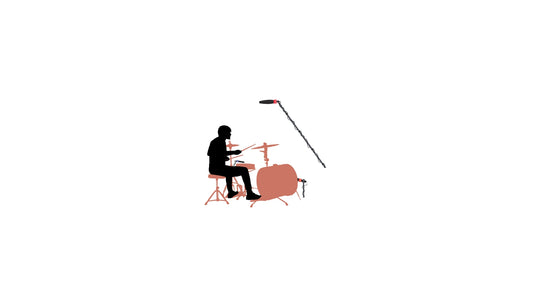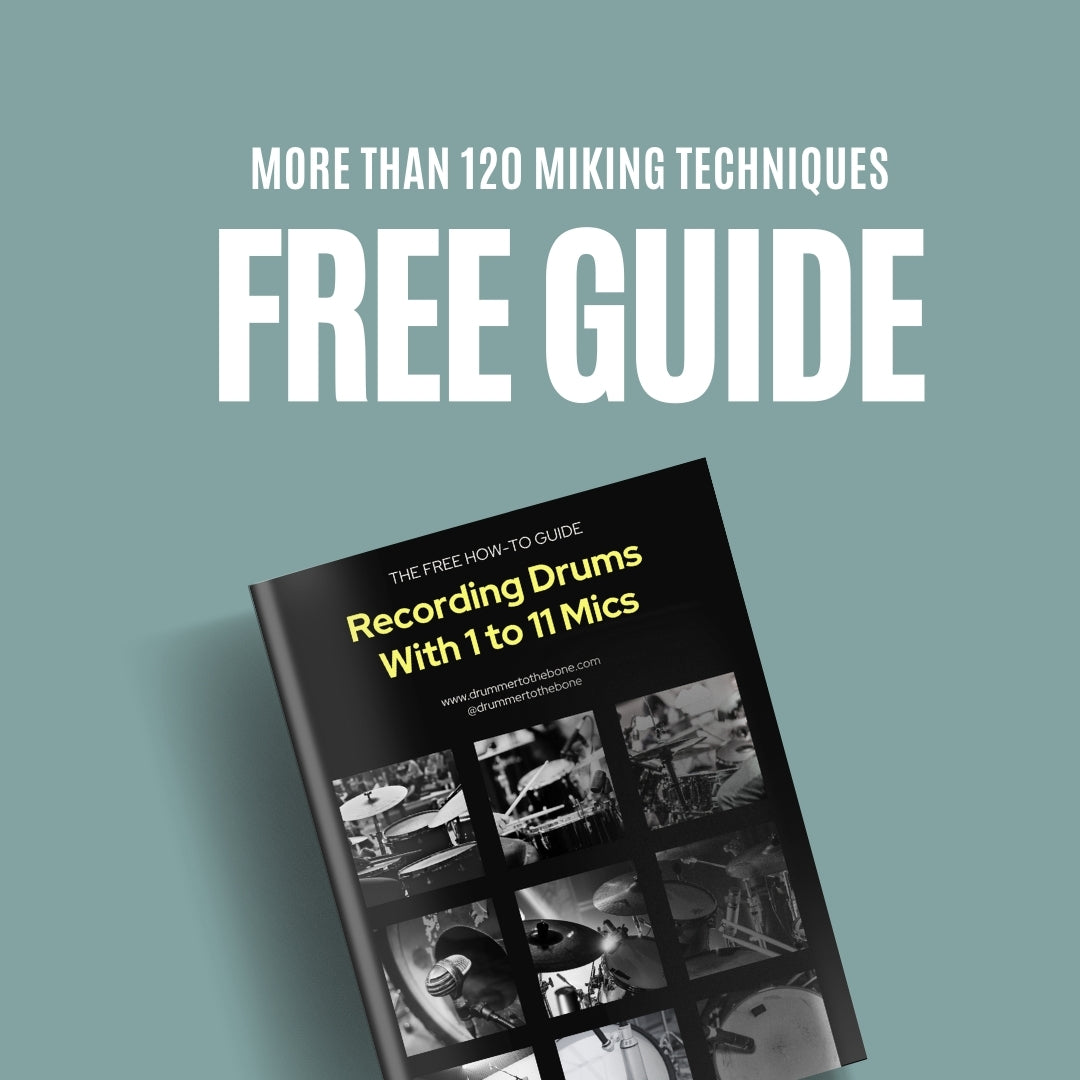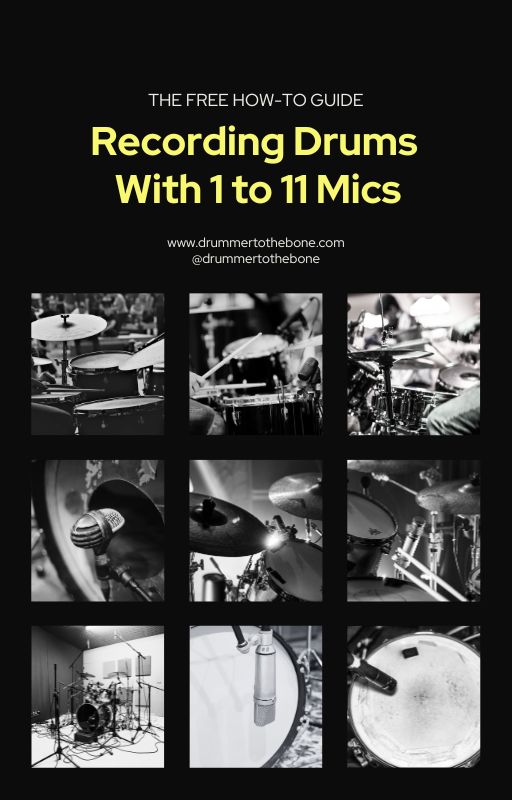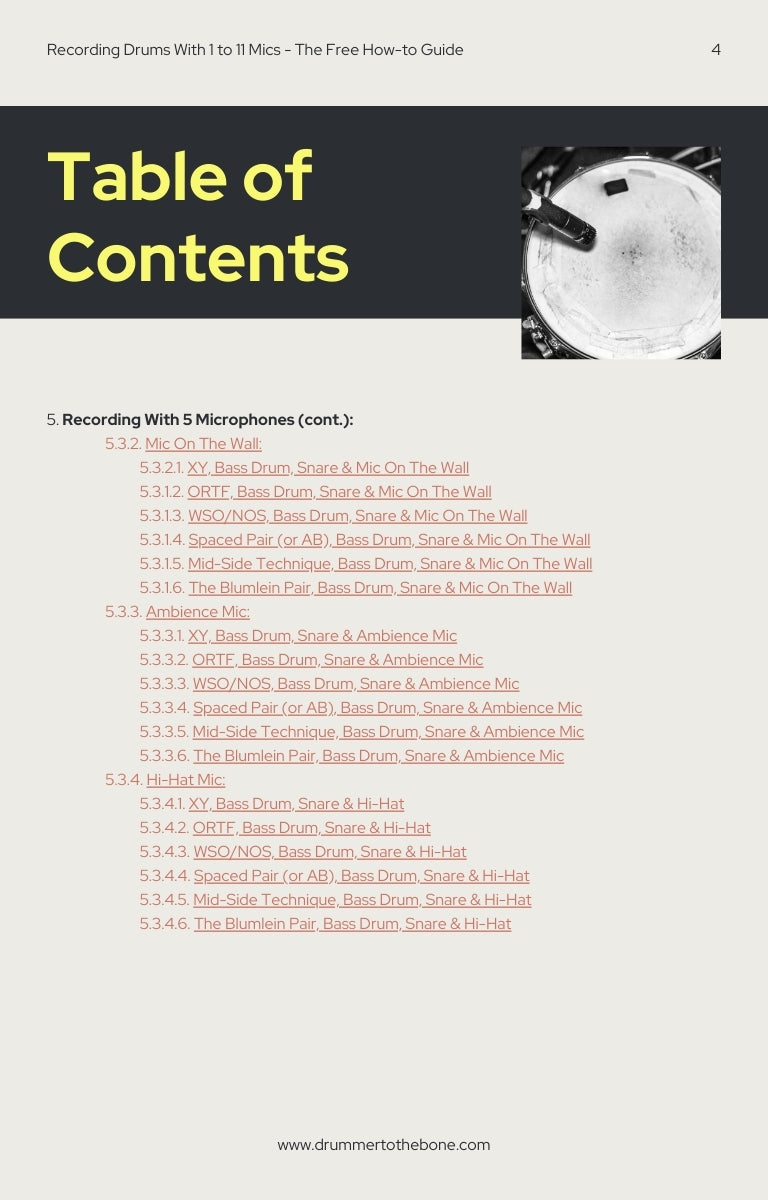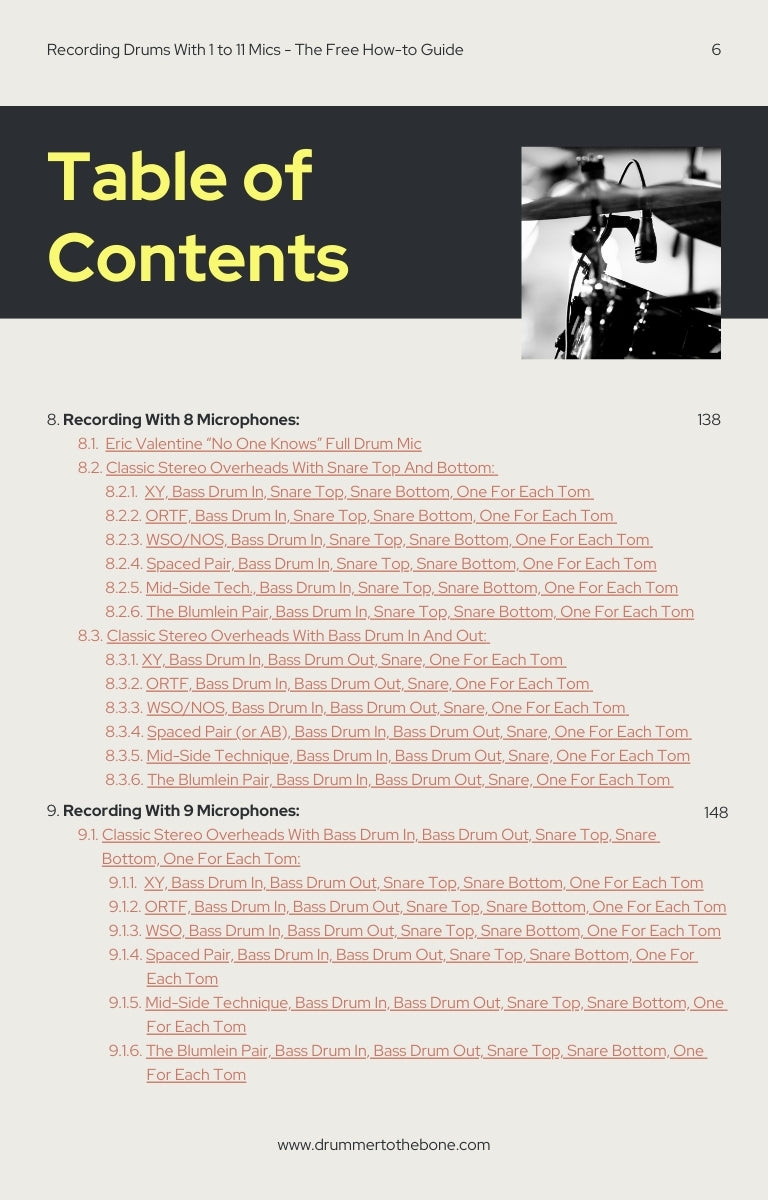Arguably the most discussed, misunderstood and mythical drum recording technique in the history of rock and roll. The technique that first captured John Bonham’s sound.
We've all seen thousands of posts explaining the technique and how it—supposedly—gets you the Bonham sound. But… really?!
Before we move on to the technique, let’s go back to the source: Glyn Johns himself.
Story time: This is an excerpt from the book “Sound Man: A Life Recording Hits with The Rolling Stones, The Who, Led Zeppelin, the Eagles , Eric Clapton, the Faces . . .” by Glyn Johns, published in 2014. He’s referring to the recording sessions for Led Zeppelin’s eponymous debut album from 1969, at Olympic Studios, London:
“It was a complete accident. I usually use three or four mics on drums. One over the top, one on the floor tom-tom, one on the bass drum, and one on the snare, which I very rarely use. Because we were always limited to the number of tracks available back in those days, drums would always be recorded on one track, and depending on the session, sometimes with the bass mixed with them.”
“We had finished a basic track and had decided to overdub an acoustic guitar on it. I took one of the Neumann U67s that I had been using on the drums to use on the guitar, and having finished the overdub, I put it back on the drums in order to start the next basic track. When I lifted the faders to listen to the drums, I found that I had inadvertently left the mic assigned to the track I had been using for the overdub, which I had placed to the far left of the stereo. As the other drum mic was in the middle, it spread the sound to the left.”
“So I wondered what would happen if I put them left and right, and made the small adjustment of pointing the floor tom-tom mic at the snare, making the two mics equidistant from it. The result sounded enormous, with the completely different perspective that stereo brings. It is completely unnatural to have the drums spread across the entire stereo picture, so I panned each track half left and half right, ending up with the technique I have used ever since.”
“There is no question that if I had not been working with John Bonham and the extraordinary sound he was giving me, I would not have spotted it. A prerequisite to this working is that you must have a drummer who gives you a good sound, as well as a pair of Neumann U67s or 47s, or Telefunken 251s.”
With this in mind, a few important things to notice:
- Since the 4th microphone is optional, but can be an integral part of the technique, we are listing it under a 4-mic technique, although it is usually cataloged as a 3-mic technique.
- This approach was only used in Led Zeppelin’s first album. Glyn never engineered for them again. His brother Andy Johns took over until 1971. Maybe other engineers used a similar approach in later albums, but it is improbable. If you’re looking to recreate the drum sound from Led Zeppelin’s “Fool in the Rain” (In Through the Out Door, 1979), these are not the droids you're looking for.
- If you want to know more, here's Jeff Ocheltree, Bonham's last drum tech (previous role was occupied by Mick Hinton), explaining Bonzo's set up, tuning and mic set up for his later records. The mic set up is nothing like the Glyn Johns Method.
- Bonham’s sound was also a product of his unique approach to drumming: most notably, his 26x14 bass drum with felt strips crossing the inside of the drum and no additional muffling, and his jazz-like tuning.
- Also, he was an insanely consistent and controlled drummer. He hit hard, but balanced. Without good balance, there's not much you can do with this technique
- Bonham was on a riser in the recording session, which adds a lot of low end. This has been stated by Johns himself (source here).
- Johns believes that the secret (other than the 2 overheads being equidistant from the snare), are the Neumann U67s or 47s (source here).
- All in all, the Glyn Johns Method is a super interesting technique for vintage sounds. But not very versatile for modern music. Glyn himself has stated this. If you’d like to hear what this technique sounds like in modern hi-fi audio, check out Eric Clapton’s 2016 album “I Still do”, produced and engineered by Johns.

Eric Clapton’s 2016 album “I Still do”, produced and engineered by Glyn Johns.
And last, but not least, the man himself has stated that he only stands by this video of him explaining the technique. The 4:29 mark has the priceless exchange between Johns and a person attending the demonstration:
Attendee: “Do you ever measure distances of the microphones?”
Johns: “No, it’s bullshit."
Priceless.
Now, to the technique:
- Place an overhead about 3 to 4 feet above the snare drum, facing down, so it captures most, if not all, the drum set.
- Place a second overhead about 6 to inches from the floor tom, above the rim, so that it is approximately equidistant from the first overhead.
- Don’t ask if you should measure to make sure they’re exactly equidistant, you might get Glyn pissed…
- Place a mic inside or just outside the bass drum, in order to get the best sound possible without any bleed.
- Lastly, if necessary, place a mic on the snare, about 3 fingers from the top head.
- This last microphone—according to the man himself—is optional, and depends on the sound you’re looking for, the drummer, and the room.

Pros of this technique:
- It is very easy to set up. You can get a very good sound with only 3 mics.
- If you sound good and the room sounds good, this should work. If you’re in a very “dead” room, then it might not be a very good choice, the same with very “bright” rooms with a lot of sound bounce and echo.
- Between you and I, use whatever condensers you have at hand and give it a go. A single Neumann U67 microphone is around $7,000. Unless you have $14,000 to play around… As if being a drummer was not expensive enough…
Cons:
- Limited scope for modern sounding music. I couldn’t find any producer or drummer that has used this technique in a professional recording for modern-sounding music. I’m not saying it hasn’t been used. It has—or at least in part. Take for example Greta Van Fleet’s 2018 album “Anthem of the Peaceful Army”, producer Al Sutton uses the Glyn Johns method as his basis, but then adds other mics in different positions (source here). The band’s sound requires a Led Zeppelin vibe, so in that case it is an absolutely valid approach—almost a necessity. But if you’re making a modern metal album, then it might not be for you.
- The drums, the room and the drummer have a lot to do with the sound. This technique can be very unforgiving. If you’re not sure about the drummer’s balance, how the drums sound and the room’s sound, probably not a good idea.

In Greta Van Fleet’s 2018 album “Anthem of the Peaceful Army”, producer Al Sutton uses the Glyn Johns method as his basis.



